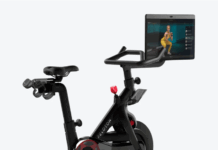By Peter Abraham — Recently I attended the Bicycle Leadership Conference in Dana Point, California. Run by non-profit People for Bikes, the event brings together not only bike business people but non-profits, vendor businesses and international brands. As someone who is relatively new to the bike business, this is just my third BLC, but some have been coming to this event for many years. It’s a very well run and super informative conference. Here’s what I learned:

1. Bikes need more diversity, at every level:
Giant Bicycles Chairwoman Bonnie Tu gave a moving presentation and implored all of us in the room to embrace an inclusive culture. When she started riding a bike (in her 50s) she felt that most brands were ignoring the female customer. So she started the Liv brand, which is run by women for women. I was immediately inspired when she explained that she “ran her first triathlon at 68 years old and rode her first gravel race at 73.” The most important thing Bonnie said was that “you can’t be in and out of diversity just when it suits you. You’re either in all the time or not. There is no in between.” This was good for some brands in the room to hear. I’ve observed that in this time of declining demand for bikes, some businesses are pulling back on their DEI initiatives. They perceive inclusivity to be a “nice to have” but not a “must have.” That’s disappointing, because not only is inclusivity a human rights issue, but these brands are foregoing the opportunity to tap into huge new customer segments among people of color, women and LGBTQIA+ riders.
Inclusivity means many things in bikes: it applies to customers and people who ride bikes, of course, but also to employees and leaders in the bike space. You can see in this photo looking out over the BLC attendees that bike brand leadership is overwhelmingly made up of middle aged white males (of which I am one). It’s time for newer, more diverse leaders to enter the space.
2. Innovation is lacking, and most bikes are identical:
Matt Heitmann (of Signa Sports United) and Dustin Robertson (of DRMG) presented a slide that said “customers are drowning in a sea of sameness.” This is something I’ve observed for a few years now; bikes are commodities. Most recreational bikes consist of frames made by the same group of factories in China, and then they have either SRAM or Shimano components. No matter the brand, the bikes are essentially identical. The two most innovative bike brands of the last 10 years are software businesses: Zwift and Strava. But I don’t see this energy in bicycle and component manufacturers. The technical innovation has been linear and steady, like going from 11 speeds to 12. Where are the young entrepreneurs? Where are the bike technology accelerators and incubators? As I walked around the Marriott in Dana Point having lunch, dinner and drinks with many bike business executives, I was struck by their age. There are lots of men in their 50s and 60s running brands that were once innovative and creative, but not anymore.
3. There are few inspiring brands in the bicycle space:
On the final evening of the conference, we had an outdoor dinner down on the beach. It was cool out, so we all wore jackets. Or should I say, we all wore Patagonia puffy down jackets. More than half of the men (including me!) wore them. It was on one hand kind of ridiculous. Like a bike bro cliché. On the other hand, I wondered why there are zero bike brands with this kind of resonance and tribal affiliation. This crowd identifies with Patagonia more than any bicycle brand, because Patagonia leans into its mission (sustainability) more than any businesses in the bicycle space. I do credit BLC speaker Davis Smith, founder of outdoor apparel brand Cotopaxi, for giving a moving and inspirational talk on this very subject. We all gave him a standing ovation. However, is there even one bike brand with a fan base built on a crystal clear, inspirational mission? Not that I’m aware of. There may have been a time when Rapha had some of that energy, or Specialized. But those days are long gone. It’s time for brands to step up and build tribes around strong shared values.
4. The next two years will be very challenging, unless you’re in the eBike business:
After two straight years of bike buying frenzy, the party is officially over. 2022 sales were off 10% in retail locations. While this data does not include DTC brands like Canyon, it is clear that the pain is being felt not only by manufacturers and independent bike dealers. Digital platforms Zwift and Strava have both undergone significant staff cuts in the last 12 months. Everyone in the bike business feels that the next 12–24 months are going to be very challenging. Unless you’re in the eBike business. Growth in that category looks to be almost unlimited, at least for the next few years. There’s also an upside that I did not see discussed: When you factor in the bike boom, eBikes and the growth in gravel cycling, there are probably more people on bikes in the US (and maybe the world) than at any other time in history. So categories like parts, accessories, service, apparel and events should be in fine shape.
x
I say this partly because it was great to be at a fully attended conference seeing old and new friends in real life. Humans are hardwired to enjoy real human contact. That was fantastic. But I also took St Augustine’s University HBCU grad Finote Weldemariam, who was working at BLC, to a local criterium here in LA after the conference ended. The fields at the race were full, there were many high school kids racing and the community energy was in high gear. Criteriums are coming back, and I met multiple participants who’d just gotten into bikes over the pandemic. The bike boom of the last 3 years is now filtering through to competitive cycling, which is great to see.
Peter started racing bikes in high school and has continued to ride his entire life. He also runs the Abraham Studio (ABRHM.com), which works with purpose-driven brands in sports, technology and healthcare to find their voices and tell their stories. He lives in Los Angeles, California.












Please don’t ruin biking with left wing politics.
Comments are closed.